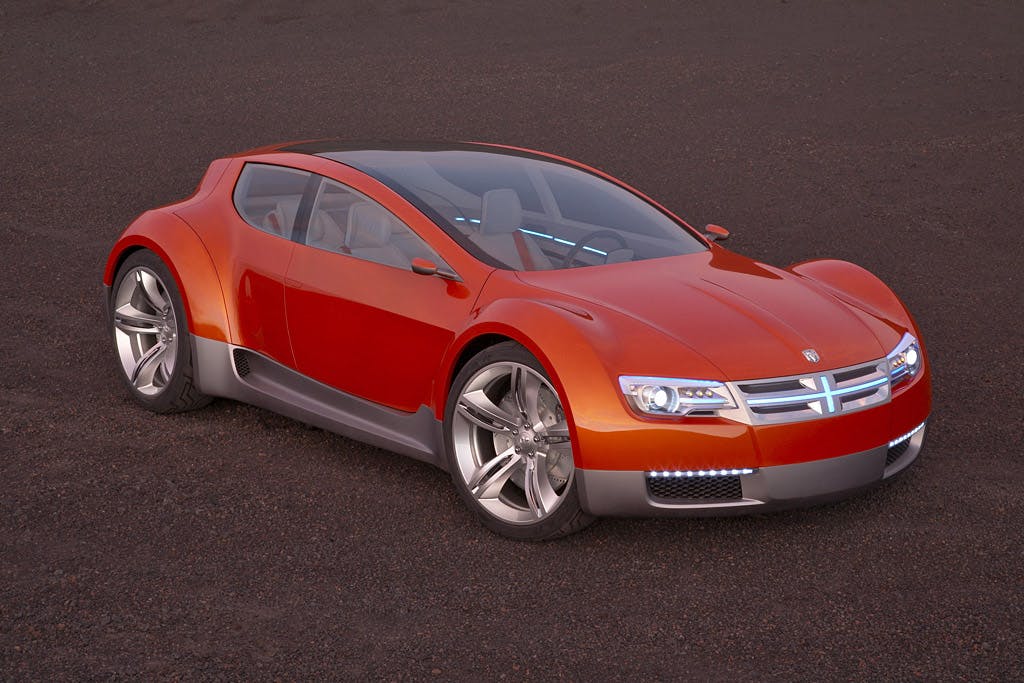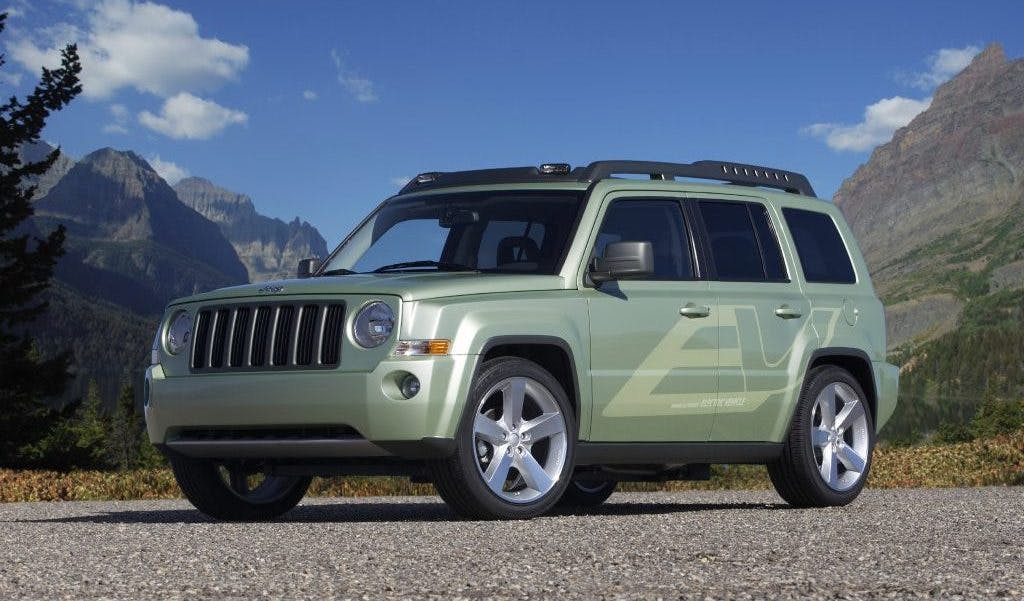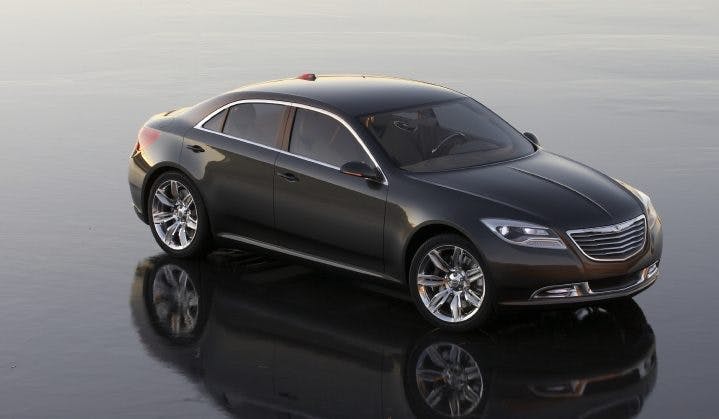Chrysler once wanted to be the ENVI of electric vehicles
It seems as though every other week brings a fresh declaration from a major automaker about plans to go full-electric at some point in the next decade. While these announcements might feel like a sign of the times, the current era is hardly first in which big brands proclaimed their optimistic intention to steer toward battery-powered future.
Flipping the calendar back 15 years or so lands us in a rather interesting place, especially for a brand that today is more recognized for the conspicuous consumption of its hyper-muscled internal combustion achievements than its green-car cred. In 2007, Chrysler (then operating under the auspices of Cerberus Capital Management) created the ENVI division, and a short time later unveiled an ambitious roadmap to producing a full lineup of electric vehicles. Some were based on existing models, while others were planned with brand-new platforms that could maximize their all-electric potential.

The 2008 global recession that soon followed the ENVI announcement scattered the best-laid plans of nearly every car company on the planet, and Chrysler was no exception. ENVI’s high-tech vision and zero-emissions promise, however, was an integral part of the automaker’s pitch to Washington, D.C. that came when Detroit’s Big Three asked for unprecedented financial assistance. ‘The future is already here,’ Chrysler seemed to be saying as it doubled-down on ENVI with the introduction of a trio of additional electric vehicles just months later at the auto show in Detroit. Surely the injection of a few billion dollars would energize its batteries and bring it all to life.
None of it ever happened. Instead, the Pentastar got dealt a different fate.
Sign of the times
Even before the recession dumped cold water on the auto industry, rising fuel prices had begun to put a damper on the unbridled enthusiasm Americans had for the enormous SUVs and equally hefty pickups that were fueling record sales results. In response to what seemed like grim projections for energy costs, almost immediately after its 2007 acquisition by Cerberus, Chrysler put together ENVI (short for ENVIronment and New Vehicles) as a sort of “company within the company.” This in-house organization would be allowed to operate much like a start-up under the leadership of Lou Rhodes, who had moved over from running Chrysler’s also future-focused Advance Vehicle Concepts and Innovation division.
ENVI’s initial objective was to boost fuel economy. Hybrids—which were inching towards the mainstream after serious efforts made by Toyota and Ford—were seen as an effective tool for achieving those goals. Although unrelated (and unwanted) battery-assisted versions of the slow-selling Chrysler Aspen and Dodge Durango SUV twins were set to arrive in 2009, ENVI’s approach towards electrification was far more aggressive.
Within the year, the first fruits of the ENVI initiative were made public. Three concept vehicles—the Dodge ZEO, the Jeep Renegade, and the Chrysler ecoVoyager—debuted in January of 2008, and they showed evidence of just how outside-the-box Chrysler was willing to go in realizing its electric dreams. Of the trio, the ZEO was a pure electric model, featuring a floor-mounted, 64-kWh battery pack that gave the rear-wheel-drive “sport wagon” a 250-mile range and roughly 268 horsepower. The ecoVoyager was more exotic with its combination of a hydrogen fuel cell and a battery pack, while the Jeep Renegade plug-in hybrid balanced a 40-mile EV range with a diesel engine. Disregard their fanciful bodywork, which was intended to grab eyes more than demonstrate production readiness, and these models represented the full gamut of advanced drivetrain technologies available at the time.

That fall, these concepts were followed by a pair of prototype extended-range hybrids in the form of the Jeep Wrangler off-roader and the Chrysler Town and Country minivan. Both were plug-ins, sharing the same drivetrain that promised roughly 40 miles of all-electric range. Also in the mix was the Dodge EV sports car (later renamed the Dodge Circuit), which followed in the original Tesla Roadster’s path of stuffing an electric motor into a Lotus sports car and slapping a different badge on the hood. As if that wasn’t enough to indicate just how bullish Chrysler was about ENVI’s prospects, in January of 2009 it pushed another pair of plug-ins, the Jeep Patriot EV and the Chrysler 200C EV onto the Detroit stage.
Chrysler was confident about the practical applications of ENVI’s battery technology. In addition to talk of building a small fleet of limited-range city cars, in Detroit, the automaker made the even more audacious promise to bring one of its five EV prototypes to market in just a year’s time, with a half-million electric sales predicted by 2013.
Shaky ground
In backdrop of this joyous ENVI enthusiasm was Chrysler’s extremely troubled financial situation. Throughout 2008 there was talk another ownership change; a potential merger with GM was actively negotiated through the fall of that year, but that went away as soon as the depths of both company’s spiraling economic misfortune were made clear by the encroaching global recession. By December, after shutting down plants and cutting thousands and thousands of jobs, the Big Three arrived in hybrid cars to Congress’ front door that December, hat-in-hand, asking for a multi-billion dollar bailout.
The Troubled Asset Relief Program doled out $17.4 billion in loans to GM and Chrysler, with the latter receiving $4 billion of that amount, but it was far from enough to right the ship in Auburn Hills. A few weeks after its ebullient display at the 2009 show in Detroit, Chrysler announced plans to sell a 35 percent interest to Fiat; at the end of April, it was bankrupt and on its way to being wholly absorbed by the Italian concern as part of a complex restructuring.
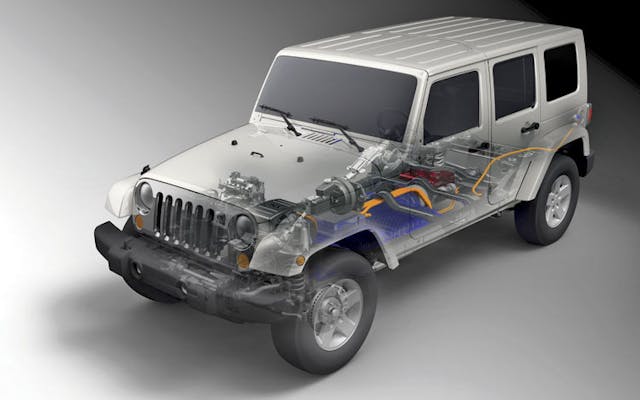
Any series of unfortunate events as dire as those experienced by Chrysler during the 2008–2009 global economic crisis is sure to have an equally outsized impact on future product plans. Surely ENVI, however, should have been the priority for a company punching its way out of insolvency towards a green technological horizon that had just a few months beforehand been touted as the best path towards profitability not just for Chrysler, but for each of Detroit’s badges as they weaned themselves off thirsty SUVs. This was in fact the exact argument that Chrysler had previously laid out in front of Congress, with the company’s vice-chairman centering its EV efforts as the primary reason it was deserving of a big-buck assistance. The funds were apparently needed to produce the very models ENVI had promised were possible.

And yet, after Fiat took control of Chrysler there was nary a peep about ENVI once the ink was dry on the newly-formed Fiat Chrysler Automotive paperwork. After bureaucratic untangling, the division was “absorbed into the normal vehicle development program,” which meant cutting the jugular of each electric prototype that had been unveiled during the previous 12 months. As for other hybrid development plans, FCA largely ignored the hybrid-electric segment in North America, engaging only in the occasional compliance car (think Fiat 500e) or small pilot project (often backed by government money) until the emergence of the Chrysler Pacifica plug-in hybrid for the 2017 model year.
The ENVI endgame
Was ENVI entirely a dog-and-pony show intended to secure crucial government funding at one of the worst times in Chrysler’s history? A cynical take on the circumstances surrounding its sudden appearance on the scene, and its equally rapid retraction from FCA’s future plans, certainly lends itself to that interpretation. It’s also one that was shared by certain members of the media, automotive and otherwise, at the time.

Consider, however, that Chrysler received less than a quarter of the financial support afforded to General Motors under TARP, which then forced it to seek out Fiat as a suitor. From that perspective, and combined with the sheer number of prototypes and concepts unleashed in a relatively short period of time, the idea of ENVI solely as a last-ditch effort to open up the federal spigot seems less likely. If ENVI was indeed earnest, then FCA’s decision to shut it down and walk away from EV production and design appears to be a far more practical approach in reaction to its immediate need for survival. A company struggling to escape enormous debt is unlikely to invest billions more in a technology that commanded only the tiniest sliver of the new car market. This is especially true given that post-recession, fuel prices had once again begun to drop to a level that would sustain the high-horsepower, high-profit trucks and muscle machines that went on to sustain Chrysler, Dodge, Ram, and Jeep throughout the next decade.
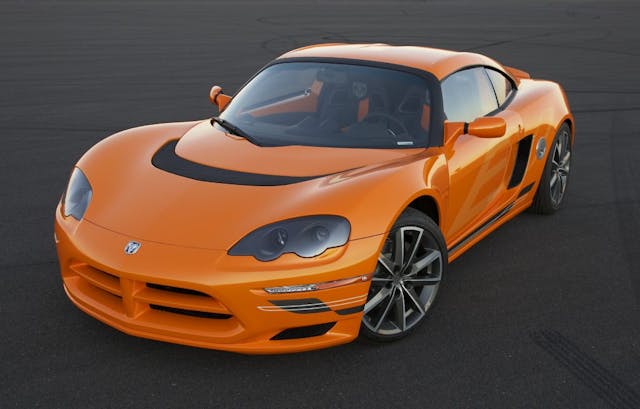
Putting a half-million EVs on the street by 2013 was an overambitious goal, and it held no allure to FCA if it meant likely losing money on every single one of those sales. Instead, a savvy—and nearly broke—Chrysler allowed rivals like GM, Toyota, and Ford to bear the cost of determining which tech worked best and what level of electrification consumers were willing to adopt. Now it’s swooping in nearly a decade later with a modest plug-in program of its own—including a hybrid Jeep Wrangler already on sale and plans for an all-electric Dodge muscle car in the works.
ENVI was a false start, but it showed Chrysler had the will even if it ultimately relied on its rivals to find the way. We’ll see if Stellantis can complete the circuit.

